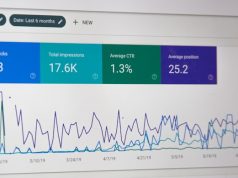
Table of Contents
- What Is Geographic Information Science?
- Industries Being Reshaped by GIS
- Cutting-Edge Applications of GIS
- Benefits of GIS for Business Decision-Making
- Career Paths and Skills in Geographic Information Science
- The Rise of Online Learning in Geographic Information Science
- Recent Developments and Data from the GIS Field
- What’s Ahead: The Future of GIS in an Increasingly Data-Driven World
What Is Geographic Information Science?
Geographic Information Science (GIScience) has quietly become one of the most essential disciplines of the 21st century, underpinning countless innovations across the private and public sectors. At its core, GIScience focuses on systematically acquiring, managing, and analyzing spatial or geographic data. Through advanced mapping techniques and computational modeling, GIScience enables us to visualize the world around us in entirely new ways. By integrating elements of geography, computer science, mathematics, and environmental science, GIScience is the foundation for creating the detailed and interactive maps that many rely on daily, whether for scientific exploration, commercial ventures, or policy decisions.
It’s worth noting the often-overlooked distinction between the terms GIS and GIScience. GIS refers primarily to the software and hardware tools that allow for spatial data analysis, while GIScience delves into the deeper, theoretical principles that guide those tools. The field’s roots date to early cartography, but the discipline flourished in the digital age. Today, modern academic programs—like those offered through online GIS masters degrees—give students the opportunity to become specialists, grounded in both the technology and methodology of spatial data science.
Industries Being Reshaped by GIS
Diverse studies have felt the ripple effects of GIScience, each leveraging the technology to gain deeper insights and streamline decision-making processes. In urban planning, for instance, planners now routinely use detailed geospatial analyses to inform infrastructure development, transit optimization, and resource allocation. By predicting population growth and modeling the impact of new roads and buildings, city officials can reduce traffic jams, improve public transport, and design healthier urban spaces.
The healthcare sector is another primary beneficiary of GIS. Hospitals and government agencies depend on spatial data to track the spread of infectious diseases, pinpoint at-risk communities, and manage vaccination campaigns. During emergencies such as the recent COVID-19 pandemic, GIS was instrumental in identifying outbreak hotspots and delivering resources where they were needed most.
Agriculture has experienced a boom in “precision farming,” as GPS-guided machinery, soil sensors, and geospatial analytics help maximize yields while conserving resources. With GIS, farmers can assess soil quality, monitor crop health, and predict pest activity. Emergency response professionals, meanwhile, use GIS to prepare for natural disasters, map damage in real time, and coordinate effective rescue operations. In these ways and more, GIScience is transforming industries from the ground up, helping professionals address complex challenges with clarity and agility.
Cutting-Edge Applications of GIS
With technological advancements, GIS applications have become more nuanced and robust, touching nearly every aspect of society. In public health, the CDC’s use of GIS in public health reveals how critical spatial data mapping has become for analyzing the spread of illnesses, modeling potential interventions, and ultimately saving lives. Health leaders can act faster and more efficiently by visually representing where and how diseases travel.
Natural disaster management is another area where GIS has revolutionized protocols, transforming early warning systems and emergency planning. Real-time satellite imagery helps track hurricanes and tornadoes, while fire and flood models are continuously updated as new data flows in from ground sensors. These innovations have undoubtedly reduced response times and saved lives when every second counts. As cities get smarter, GIS is integral to intelligent transportation systems—traffic flow analysis, monitoring of public buses, bicycle-sharing coordination, and even the placement of public utilities are all managed through spatial insights. These real-world examples show how GIS is far more than lines on a digital map; it’s a decision-driving engine for modern society.
Benefits of GIS for Business Decision-Making
The business world is fast discovering the compelling return on investment that GIS brings to strategic planning. Companies are harnessing spatial analysis for tasks ranging from supply chain logistics to customer behavior forecasting, often unlocking efficiencies and new markets.
- Efficiency Gains: Retail and delivery companies optimize routes with GIS, reducing operational costs linked to mileage, delivery times, and fuel usage. By leveraging these insights throughout their logistics networks, organizations cut costs and increase speed, all while keeping customer satisfaction high.
- Predictive Analytics: Commercial real estate developers use predictive geographic models to analyze demographic trends and anticipate future hot spots for building new stores or offices, supporting informed investment decisions.
- Customer Insights: Marketers overlay sales data and demographics to understand not only to find their best customers, but also to drive purchasing decisions in different regions.
A recent study published by the International Journal of Geographical Information Science found that organizations with robust GIS capabilities are not more agile and accurate in their forecasting, allowing for swifter pivots in the face of market or supply chain disruptions. The widespread adoption of GIS in large and small enterprises signals a broader shift toward data-driven decision-making that puts geography at the center of innovation.
Career Paths and Skills in Geographic Information Science
With more organizations embracing geospatial intelligence, the demand for skilled professionals has never been greater. Career options abound, from GIS analysts and remote sensing specialists to data coordinators, cartographers, and app developers. According to the Bureau of Labor Statistics on GIS careers, opportunities for cartographers and photogrammetrists are projected to grow much faster than average through 2032, propelled by the need for sensors, mobile tech, and real-time spatial data across private and public organizations.
Employers seek individuals with strong technical acumen in platforms like QGIS or ArcGIS and skills in programming, spatial statistics, and data visualization. Yet technical know-how alone isn’t enough. Increasingly, soft skills—including clear communication, teamwork, and ethical decision-making—are vital in translating complex geospatial findings into actionable strategies. Many universities, including well-known institutions such as Northwest Missouri State University, offer robust GIS curricula. Students are well-positioned to enter a field that blends pioneering technology with practical impact.
The Rise of Online Learning in Geographic Information Science
The evolution of digital learning has democratized access to GIS education, making it more flexible than ever before. Busy professionals, career switchers, and students in remote locations can now master GIS through fully remote degree programs, allowing them to balance family, work, and academic pursuits.
An online GIS master’s program is an attractive pathway for anyone eager to enter or advance within the GIS field. These programs typically offer advanced computational analytics, programming, critical thinking, hands-on mapping labs, and networking with a global peer group. The digital format often mirrors real-world work conditions, where collaboration, problem-solving, and technology fluency are essential skills. Graduates find opportunities at research labs, municipal agencies, consulting firms, and beyond, equipped with increasingly demanding expertise.
Recent Developments and Data from the GIS Field
The pace of change in GIS has accelerated dramatically in the last decade, largely thanks to advancements in open-source software, cloud technology, and real-time data streaming. Public agencies worldwide are moving toward open data initiatives, making a wide array of geospatial datasets available for researchers, businesses, and community planners. This trend supports transparency, collaborative problem-solving, and innovation at every level.
- The shift to web-based GIS allows instantaneous updates and continuous monitoring of natural disasters, public health threats, or infrastructure status, leading to better-informed and more responsive interventions.
- The fusion of machine learning with GIS has made predictions more accurate, especially in forecasting natural hazards, managing cities, and tracking environmental changes. These integrations are helping governments and organizations make strategic, real-time decisions about safety and sustainability.
- Cloud platforms and APIs are accelerating the pace of development, making it easier to ingest, analyze, and distribute geospatial data in ways that were impossible only a few years ago.
What’s Ahead: The Future of GIS in an Increasingly Data-Driven World
The future of GIS is nothing short of exhilarating. With billions of connected devices set to stream real-time location and sensor data, the next surge of innovation will focus on integrating GIS with the Internet of Things (IoT), artificial intelligence, and big data analytics. These connections can automate processes, uncover previously invisible patterns, and enable highly personalized experiences for cities, businesses, and individuals.
At the same time, the industry faces critical questions about privacy, data ownership, and ethical responsibility. With more data comes greater responsibility—GIS specialists must navigate data bias, consent, and transparency as geo-based applications expand into sensitive areas of daily life. However, equipped with a blend of technical, analytical, and ethical perspectives, GIS professionals are uniquely positioned to guide this evolving landscape responsibly.
As Geographic Information Science becomes an indispensable resource for leaders and innovators worldwide, its impact will only deepen, shaping industries, driving discovery, and improving lives around the globe.






